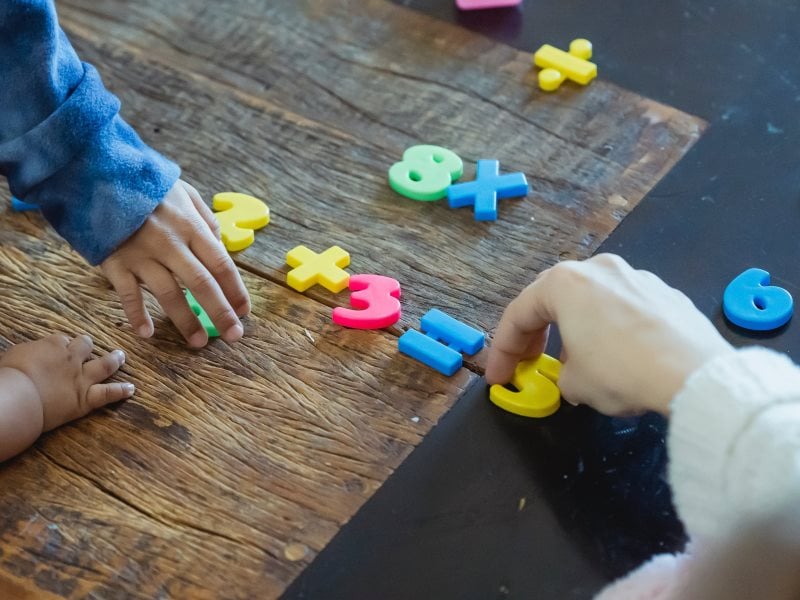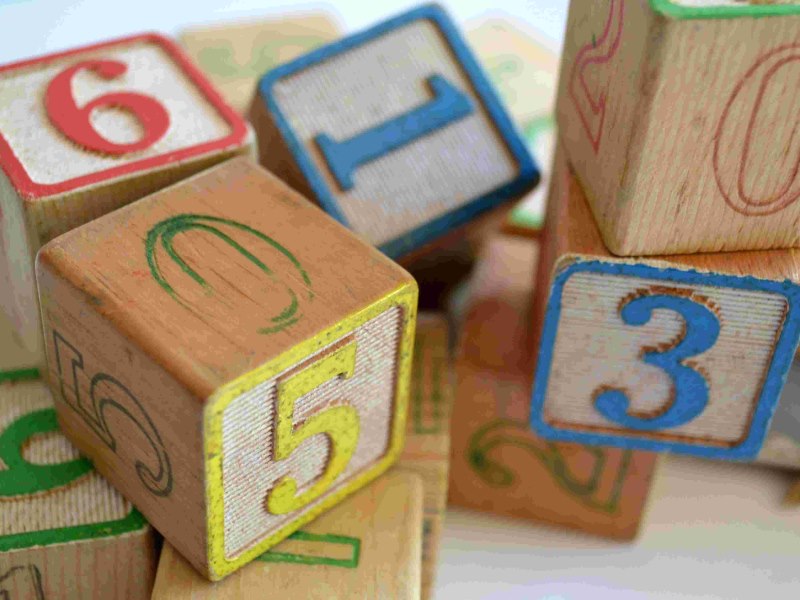As adults, there are many skills we take for granted, but the truth is, we had to learn these skills, through hard work and perseverance. The quintessential example of this, of course, is telling time on an analog clock! As adults, we seldom think of the mental somersaults required to tell time on a traditional clock, but that changes when you have children. Read below to learn how to teach your child to read a clock, and help them get a jump start on their own education and independence.
Is Your Child Old Enough to Tell Time?
 As a child's brain develops, their neural connections become better equipped to comprehend concepts, that once were too advanced for them. For example, the idea of object permanence (and the end of fascination with peek-a-boo!) or understanding the reality of dangers and consequences are intellectual growths we acquire with age. The same holds true for telling time.
As a child's brain develops, their neural connections become better equipped to comprehend concepts, that once were too advanced for them. For example, the idea of object permanence (and the end of fascination with peek-a-boo!) or understanding the reality of dangers and consequences are intellectual growths we acquire with age. The same holds true for telling time.
So, how old should your children be when you teach them about time?
There are a few key ages where you should teach your child about time -- but remember this is an incremental process:
- Age 5-6:
Children should be able to read the hour and half hour markers on an analog clock, and draw the corresponding times as well. - Age 6-7:
Children should know the number of minutes in an hour and the number of hours in a day.
Children should be able to tell / draw time in five minute increments,
Children should be able to comprehend quarter to / quarter past concepts - Ages 7-8:
Children should be able to read an analog clock, using 12 hour clocks, 24 hour clocks, and Roman Numerals (I-XII).
Children should be able to compare time (by hours, minutes, and even seconds).
Children should be comfortable using time-specific vocabulary (o’clock, a.m./p.m., morning, afternoon, noon and midnight).
Teaching Your Child to Tell Time
Before a child can tell time, they need to understand the basics of what goes into telling time. Follow the below processes to ensure your child has the foundational knowledge to read a clock:
- Practice Counting to 60: Before they can run, they have to walk. Similarly, before they can tell time, they have to know all their numbers up until 60, comfortably. Help them learn by having them read the numbers from a chart, write them, and recite them from memory.
- Practice Counting by Fives: Once your child has learned to count to 60, teach them to count to 60 by fives. Your child will have mastered this when they can recite and write from 0-60, from memory.
Check YouTube for some catchy tunes to ease the process.
- Introduce Your Child to the Concept of Time: Time, is actually quite a radical process (one that took humans a few thousand years to understand and record).
Start by introducing your child to the concepts of morning, noon, evening, and night time.
Then, ask your child when certain routine activities happen. (i.e. "When do we eat breakfast?" or "What do we do in the morning?").
Once your child can understand these divisions of the day, they're on track to understanding time! - Make a Model Clock Together: Pick up a paper plate, and enthusiastically tell your child "Today we're making our own clocks!" Keep an analog clock next to you, to use for reference. There are many websites available with free lesson plans on how to do this at home.
Be sure to focus on the important markers (12, 3, 6, 9), as well as the Hour Hand and Minute Hand during construction.
Afterwards, try a few simple examples of setting and telling times. To make it fun for your child, take turns with setting and answering (don't be afraid to get a few wrong to show them that it's okay to make mistakes) - Connect Time to Their Daily Routine: As your child continues to learn about time, keep connecting time with their daily routines -- but now go more advanced. For example, ask them what time school ends. Then, ask them to show you the corresponding time on the model clock.
Try doing this a few times every day (with different examples).
- Start With the Hour Hand: As the easier of the two hands to grasp, start teaching your child how to use the hour hand of the clock so they can relate each number to an hour of the day.
Model how to read the hour hand a few times ("I see the hour hand is pointing to _, so I know it is _ o'clock!")
Then, as they start to pick it up, ask them to show you certain times on the clock. - Practice With the Minute Hand: The minute hand is more difficult for children to understand. Explain to your kids that since there are 60 minutes in an hour, 1 means 5, and 9 means 45. This can be extremely frustrating for most kids -- who like to think of math as black and white, so please ease them in to this and be patient.
Model how to read the minute hand ("I see the minute hand is pointing to x, so I know it is _:x*5 o'clock!")
If your child is really struggling, just draw the number of minutes around the clock and have them use that as a reference.
Remember, telling time is quite a difficult process and it will take your child some time.
- Start With the Hour Hand: As the easier of the two hands to grasp, start teaching your child how to use the hour hand of the clock so they can relate each number to an hour of the day.
- As your child slowly builds confidence with the time-telling process, encourage them and continue to practice with them regularly. If they make mistakes, simply model the correct way to do it and try again.
Remember, all good things do take some time :)
Genie Academy provides after-school enrichment programs for students covering math, reading, writing, and coding. With locations throughout New Jersey, including Plainsboro, our programs are tailored for students in Pre-K through 8th grade.
Sources
"Activity: Make A Clock!" [Web]. Retrieved from https://www.education.com/activity/article/clock_first/
Busythings Ltd (2015). "Teaching Children How to Tell the Time: Hints and Tips." [Web]. Retrieved from https://www.busythings.co.uk/blog/teaching-children-how-to-tell-the-time-hints-and-tips/
Palomino, C (2019). "How to Teach Kids to Tell Time." [Web]. Retrieved from https://www.wikihow.com/Teach-Kids-to-Tell-Time
Wikipedia (2020). "History of Timekeeping Devices." [Web]. Retrieved from https://en.wikipedia.org/wiki/History_of_timekeeping_devices#cite_note-bruton-6





